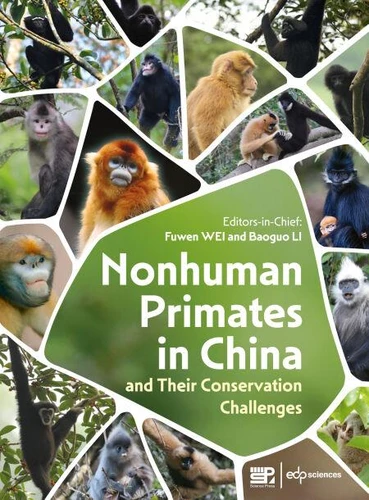Nonhuman Primates in China and Their Conservation Challenges
Par : ,Formats :
Disponible dans votre compte client Decitre ou Furet du Nord dès validation de votre commande. Le format PDF est :
- Compatible avec une lecture sur My Vivlio (smartphone, tablette, ordinateur)
- Compatible avec une lecture sur liseuses Vivlio
- Pour les liseuses autres que Vivlio, vous devez utiliser le logiciel Adobe Digital Edition. Non compatible avec la lecture sur les liseuses Kindle, Remarkable et Sony
 , qui est-ce ?
, qui est-ce ?Notre partenaire de plateforme de lecture numérique où vous retrouverez l'ensemble de vos ebooks gratuitement
Pour en savoir plus sur nos ebooks, consultez notre aide en ligne ici
- Nombre de pages178
- FormatPDF
- ISBN978-2-7598-3827-1
- EAN9782759838271
- Date de parution24/07/2025
- Protection num.Digital Watermarking
- Taille61 Mo
- Infos supplémentairespdf
- ÉditeurEDP Sciences
Résumé
This book systematically integrates fossil records of primates since the Pliocene to illustrate their dispersal and radiation routes in East Asia and reconstruct historical changes in their distribution using Chinese literature records. This book mainly compiles contemporary records of 28 primate species (classified under 3 families and 8 genera) with confirmed distribution within China as of August 2022.
Each species entry documents critical parameters including geographical range, population estimates, current habitat status, and key threats impacting their survival. For species with global distributions, the work incorporates official IUCN Red List of Threatened Species assessments. Regarding China-endemic species, dedicated threat evaluations have been conducted following standardized criteria.
Synthesizing these findings, this book proposes prioritized conservation measures for key Chinese primates. Furthermore, it develops comprehensive protection strategies informed by the integrated dataset, ultimately aiming to provide a scientific foundation for endangered status evaluations and evidence-based conservation management.
Each species entry documents critical parameters including geographical range, population estimates, current habitat status, and key threats impacting their survival. For species with global distributions, the work incorporates official IUCN Red List of Threatened Species assessments. Regarding China-endemic species, dedicated threat evaluations have been conducted following standardized criteria.
Synthesizing these findings, this book proposes prioritized conservation measures for key Chinese primates. Furthermore, it develops comprehensive protection strategies informed by the integrated dataset, ultimately aiming to provide a scientific foundation for endangered status evaluations and evidence-based conservation management.
This book systematically integrates fossil records of primates since the Pliocene to illustrate their dispersal and radiation routes in East Asia and reconstruct historical changes in their distribution using Chinese literature records. This book mainly compiles contemporary records of 28 primate species (classified under 3 families and 8 genera) with confirmed distribution within China as of August 2022.
Each species entry documents critical parameters including geographical range, population estimates, current habitat status, and key threats impacting their survival. For species with global distributions, the work incorporates official IUCN Red List of Threatened Species assessments. Regarding China-endemic species, dedicated threat evaluations have been conducted following standardized criteria.
Synthesizing these findings, this book proposes prioritized conservation measures for key Chinese primates. Furthermore, it develops comprehensive protection strategies informed by the integrated dataset, ultimately aiming to provide a scientific foundation for endangered status evaluations and evidence-based conservation management.
Each species entry documents critical parameters including geographical range, population estimates, current habitat status, and key threats impacting their survival. For species with global distributions, the work incorporates official IUCN Red List of Threatened Species assessments. Regarding China-endemic species, dedicated threat evaluations have been conducted following standardized criteria.
Synthesizing these findings, this book proposes prioritized conservation measures for key Chinese primates. Furthermore, it develops comprehensive protection strategies informed by the integrated dataset, ultimately aiming to provide a scientific foundation for endangered status evaluations and evidence-based conservation management.



